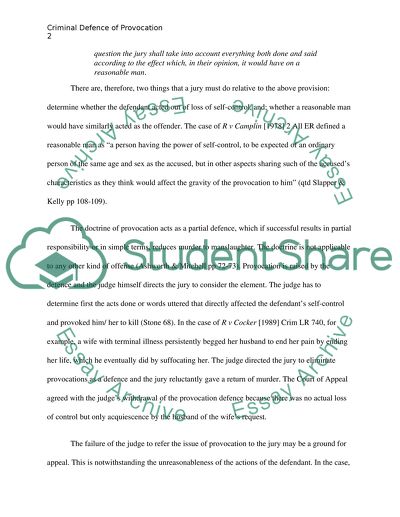Cite this document
(Criminal Defence of Provocation Term Paper Example | Topics and Well Written Essays - 2866 words, n.d.)
Criminal Defence of Provocation Term Paper Example | Topics and Well Written Essays - 2866 words. Retrieved from https://studentshare.org/law/1559515-criminal-defence-of-provocation
Criminal Defence of Provocation Term Paper Example | Topics and Well Written Essays - 2866 words. Retrieved from https://studentshare.org/law/1559515-criminal-defence-of-provocation
(Criminal Defence of Provocation Term Paper Example | Topics and Well Written Essays - 2866 Words)
Criminal Defence of Provocation Term Paper Example | Topics and Well Written Essays - 2866 Words. https://studentshare.org/law/1559515-criminal-defence-of-provocation.
Criminal Defence of Provocation Term Paper Example | Topics and Well Written Essays - 2866 Words. https://studentshare.org/law/1559515-criminal-defence-of-provocation.
“Criminal Defence of Provocation Term Paper Example | Topics and Well Written Essays - 2866 Words”, n.d. https://studentshare.org/law/1559515-criminal-defence-of-provocation.


